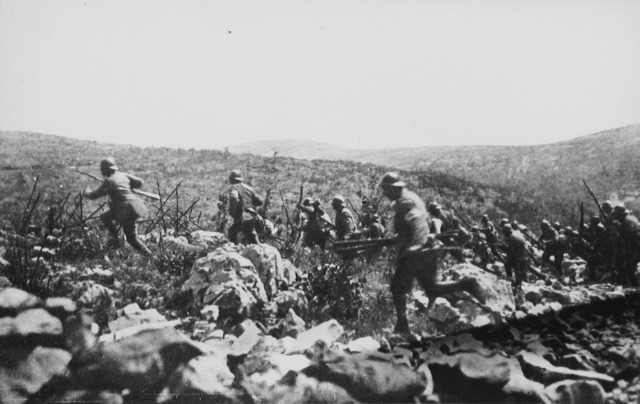

With the contingency plan arranged the French pressed Cadorna to launch a major offensive of his own along the Soča (Isonzo) to generally co-ordinate with their own large-scale Aisne Offensive (deployed in April 1917). In the event the British and French agreed to rush aid to the Italians only in the event of an emergency – for example, large-scale German military assistance to the Austro-Hungarians a contingency plan was thus developed to meet with such an eventuality. However Lloyd George's own field commanders, including Commander in Chief Douglas Haig – along with the French – disagreed, arguing that resources could not be spared from the Western Front, particularly with French Commander-in-Chief Robert Nivelle's upcoming Aisne Offensive, aimed at ending the war in the west within 48 hours.Ĭonsequently, Nivelle dispatched Ferdinand Foch to meet with Cadorna and discuss their possible options. Dubbed an "easterner" at home Lloyd George was nevertheless in favour of diverting British and French resources from the Western Front to the Italians along the Soča (Isonzo), to "knock the props out" from under the Central Powers. The UK's new Prime Minister, David Lloyd George, had long believed that the war could not be won on the Western Front alone. Casualties suffered to date were tremendous and with each renewed battle tended to be higher on the Italian attackers side. With nine largely unsuccessful Isonzo battles conducted within an eighteen-month period to date, Italian Chief of Staff Luigi Cadorna – responsible for launching all nine – became increasingly uncomfortable at the prospect of German intervention to aid their weakening Austro-Hungarian ally on the Italian Front.įor while it was clear that the Austro-Hungarian Army was suffering in what had become a war of attrition, the same could be said of Cadorna's army. The Tenth Battle of the Isonzo was an Italian offensive against Austria-Hungary during World War I. 2nd Piave River ( Taking of the Col Moschin).Instead of engaging in a frontal attack, a young officer Erwin Rommel ordered that this position be bypassed and that the successive advance should be towards west. Even in this case the bombardments were devastating and the soldiers easily reached Height 1114, the seat of a fortified Italian position. At 3.30 pm the bridge on the river Isonzo was blown up but despite this, before sunset the German troops entered the small city together with two thousand Italian prisoners.Īlso on the same day a contingent consisting of Alpenkorps and of a mountain battalion from Württemberg left Tolmino and attacked directly the western side, aiming at the peaks of the Kolovrat.

At noon they reached Kamno and two hours later they were at the doors of Caporetto, preceded only by Italian soldiers who were hurriedly abandoning all their positions. The German battalions started to climb back from the bottom of the valley in a northerly direction, meeting on their way only a few Italian soldiers who, in the absence of any official orders, did not even fire a single shot. General Pietro Badoglio only started to organize this retreat on 22nd October and allowed the Austro-German forces a considerable advantage.
#12th battle of the isonzo free#
The survivors were given the order to withdraw and so allowed free passage to the village of Saga to the Army Corps led by General Alfred Krauss.Īt Tolmino instead the Italian troops were taken completely by surprise: the order to retreat towards the nearby plateau of Kolovrat, received on 10th October, was ignored for several days. The first zone was well defended by the Italian army but besides bombs, even hand grenades and poison gas were used and in a short while more than 700 soldiers of the Friuli Battalion were killed. The Austro-German troops moved simultaneously both in the north, around Mount Rombon, as well as in the south, at Tolmino. The Twelfth Battle of the Isonzo was under way. The frontline was isolated and at seven in the morning the infantry came out of its trenches. The bombs fell relentlessly for five hours and destroyed a large part of the Italian structures. The cannons of the Austro-German troops were aimed at the rear, on their lines of communication, on observers and on the artillery positions. To the great surprise of all the soldiers of the Second Army, at 2.00 in the morning of 24th October 1917 the Italian lines between Plezzo and Tolmino started to be attacked by an unprecedented bombardment both as regards its intensity as well as its precision.


 0 kommentar(er)
0 kommentar(er)
